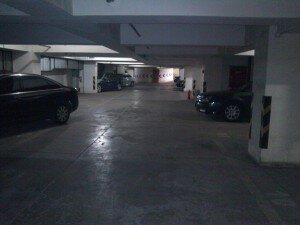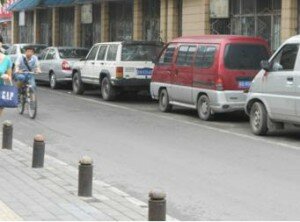A recently published article in China Daily said that ”In the next two years, the city will need a great number of parking spaces for at least 2.5 million cars, according to a joint analysis in Beijing.”
Parking problems are always a hot topic among Beijingers. Cruising around for a long time until you find a parking space is a daily experience for inhabitants of the Chinese capital. In Beijing you may observe pedestrians and cyclists being forced to transit along the motor lane because the cycling lane or side walk is being occupied by parked vehicles. However, can the perceived parking problem be affiliated to a parking slot shortage? Does Beijing need 2.5 Million Parking lots? It occurs quite similar to the problem with traffic congestion in Beijing. Does Beijing continuously build new roads to meet the continuously growing transport demand? Maybe not. New roads and parking spaces can also trigger new demand. Hence, new parking facilities can possibly induce more traffic.
Parking is a very local issue. The comparison of vehicle population and numbers of parking space in the whole city is not evenly distributed. In a certain area, parking could be a critical problem. While in the neighborhood, parking is maybe no problem at all. Only if you look into a local scale, parking situations differ from zone to zone.
In fact, parking problems can be caused by various factors. Sometimes it is a real shortage. Some other times it is just lack of parking management and enforcement. But therefore, a specific survey and data quantification is needed. By having a parking survey done in a specific area, detailed information and a deep  understanding of the parking situation can be obtained. For example, in a very old residential compound with no underground parking lot, the on-street parking of nearby local roads usually is oversaturated. However, if there is an adjacent office building, the result might be surprising.
understanding of the parking situation can be obtained. For example, in a very old residential compound with no underground parking lot, the on-street parking of nearby local roads usually is oversaturated. However, if there is an adjacent office building, the result might be surprising.
The two pictures show a completely different parking situation within one area. P arking shortage is highly depended on specific situations. Beijing suffers from a lack of high quality parking management. For example, if the underground parking lot would be public and it would charge with acceptable hourly fees, the critical surface parking issue could be ease to some extent.
arking shortage is highly depended on specific situations. Beijing suffers from a lack of high quality parking management. For example, if the underground parking lot would be public and it would charge with acceptable hourly fees, the critical surface parking issue could be ease to some extent.
Hence, building new parking spaces is not the only option. Solutions for parking problems exist on many levels and can offer great opportunities for new urban policies.


